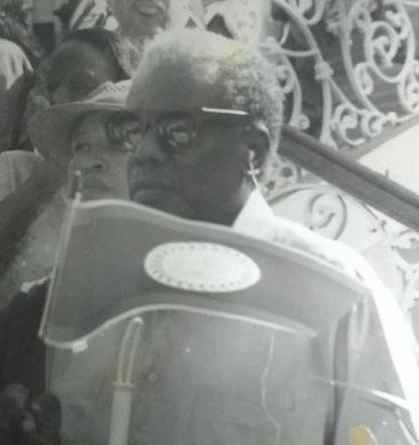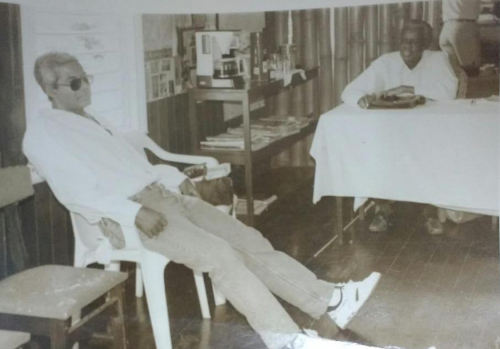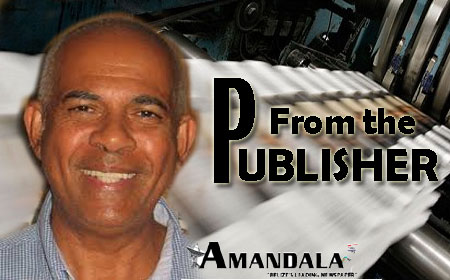As late as the 1930s, there was a St. George’s College where Anglican and Methodist teenagers went to secondary school together. Sometime in the late 1930s or early 1940s, St. George’s College split up into an Anglican component – St. Michael’s College, and a Methodist component – Wesley College. The Anglicans also established a secondary school for girls, which was called St. Hilda’s College, and so their secondary education separated the sexes, St. Michael’s being a school for boys. Wesley College became a co-educational school, which is how I met it in September of 1971. (Some twenty or so years ago, St. Michael’s and St. Hilda’s were amalgamated to form the co-educational Anglican Cathedral College.)
All the Anglican and Methodist high schools were located on the Southside of Belize City, whereas Roman Catholic St. John’s College for boys, established by the Jesuits in the 1880s, has been located on the Northside of Belize City ever since their Loyola Park campus on the Yarborough seaside was destroyed by the 1931 hurricane. The Roman Catholics had also established a high school for girls (on the Northside) in the 1880s. This was St. Catherine’s Academy.
When I was growing up, it seemed that most Catholics were People’s United Party (PUP) supporters, whereas most Methodists appeared to be National Independence Party (NIP) supporters. The Anglicans were mostly opposed to the PUP until the late l950s, when the W. H. Courtenay family, then arguably the most prestigious in the Anglican diocese, became PUP. The Courtenay family move to the PUP changed the numbers a bit, but I would guess most Anglicans, at least on the Southside, were NIP.
My father is a Catholic, and my mother is a Methodist. The main condition of their marriage, insisted on by the Catholic Church, was that all the children of their union had to be raised as Roman Catholic. I am the oldest of nine children, the first five of which were boys. All of us five older boys, beginning with myself in 1952, attended Holy Redeemer Boys School.
I don’t believe I’ve ever given Holy Redeemer the recognition the public school deserves, because, with limited resources, they equipped me with enough foundation to survive at an Ivy League university from 1965 to 1968. (Two teachers I remember with great affection were the late Louise Smith and Sister Mary Francine, R.S.M.)

In any case, I moved on from Holy Redeemer to St. John’s College in 1959, attending the high school and then the Sixth Form, a total of six years. At St. John’s College, I was a member of the Sodality for all of my high school years. In the Sodality, you are supposed to be more religiously focused. At one point, the priest in charge of the Sodality, Fr. Thomas Donovan, S. J., urged me to try to convert my mother to Catholicism. Such a conversion attempt was an immediate and complete failure.
I am providing some background so I can explain that when I began to teach English at Wesley College in September of 1971, this was my first real contact with my mother’s faith, and I surely enjoyed that contact. Remember now, Wesley College and St. Michael’s College had always been our serious SJC rivals in sports and socializing (girls), and this was why the Landivar scholastic Jerry X. McElroy’s interference in an SJC vs Wesley College baseball game at the field behind Technical in 1963/64 really, really turned me off.
Anyway, when I entered the Wesley College campus in 1971 I was the president of the UBAD Party, a revolutionary organization which had run afoul of the ruling PUP. I had been tried in the Supreme Court in July of 1970 and in January of 1971, so I had earned some street credibility. I was young, and somewhat heroic for young people out of anti-PUP family backgrounds, which was the case for most Wesley College students in 1971.
1971 essentially marked the last functional year of Hon. Philip Goldson’s NIP, the then established (Her Majesty’s Loyal) Opposition Party. Goldson’s NIP had suffered its first internal crisis in August of 1969 when Dean Lindo, following an unsuccessful challenge to Goldson’s leadership, broke off from the NIP and organized the People’s Development Movement (PDM). Shortly after, in November of 1969, the Leader of the ruling PUP, Hon. George C. Price, called early general elections, whereupon the NIP and the new PDM hurriedly came together for an election alliance (NIPDM). Theirs was obviously a bogus unity, and the PUP won 17 out of 18 seats in December of 1969, Mr. Goldson winning the lone NIPDM seat in Albert. The two parties immediately separated again.

Insofar as street challenges to the then undefeated PUP, for most of 1970, 1971, and 1972, it was all about the UBAD (which became the UBAD Party in August of 1970). Mr. Goldson asked the UBAD Party to join his NIP in a coalition for the December 1971 Belize City Council election. Mr. Lindo’s PDM boycotted the coalition.
The remarkable thing about that NIP/UBAD campaign was the support and participation of individual Wesley College students. The Wesley College love for UBAD continued into the turbulent, historic year of 1972. But then, early in 1973, UBAD began to split in two, and I led the faction which refused to join the early United Democratic Party (UDP), formally established in September of 1973.
Supported by the other half of the UBAD leadership, and in the absence of Mr. Goldson (studying law in London), the new UDP began vicious attacks on myself on their public rostrum and in their newspaper. The UDP branded me and my faction as PUP. Suddenly, the UDP had all the anti-PUP credibility. In retrospect, one can see that this was about preparation by “the big boys” for the general elections due to be held in 1974.
It is a devastating thing to have been a hero for young people, and then to be branded a traitor by the political leaders of those young people. Today, more than forty years later, there are questions that same UDP, now in power for three consecutive terms, should answer for those who were the young generation of 1972. Those questions have to do with the Sarstoon, and they have to do with the legacy of Mr. Goldson and the Belizean people. What deal have you made, Mr. UDP? Come clean with the Belizean people. Hon. George Price led Belize to political independence in 1981 with all our territory intact. This is a fact. Can the UDP handle it?
Power to the people.

